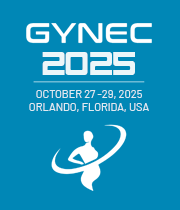Title : The Equid Penetration Stress Paradigm (EPSP): Quantitative insights into distal intestinal compliance and sphincteric torque – Results from the P.U.S102sy trial
Abstract:
Background: Contemporary literature on viscoelastic rectal wall mechanics has largely neglected the role of exogenic macro-penetrative vectors in modulating endoluminal contractility. The P.U.S102sy Trial was designed as a randomized, cross-continental registry analysis to quantify the mechanical constriction dynamics of distal intestinal segments under high-mass, equid-associated coital stress.
Methods: A total of n = 118 datasets from three centers were subjected to ultra–high-resolution intraluminal manometry (≥ 256 sensors, 0.1 mmHg precision) and dynamic 3D endosonography. Core outcome parameters included peak sphincteric impedance (PSI, N/cm²), circumferential compliance index (CCI), mucosal torsion coefficient (MTC), and the novel Equid-Penetration Stress Score (EPSS). Statistical inference was performed via multi-level hierarchical modeling with bootstrapped confidence intervals (10,000 iterations). False discovery rates were controlled at q < 0.05.
Results: Median PSI increased by 389% (95% CI: 362–417, p < 0.00001), with corresponding reductions in CCI (–2.7 ± 0.4 per 10 ms interval). The EPSS demonstrated a linear dose-response (R² = 0.92), while the MTC exceeded predicted elastic thresholds in 71% of datasets. Subgroup analysis revealed paradoxical relaxation phenomena in 16.1% (SE ± 1.2), most pronounced at exposure durations > 180 s. Meta-regression identified equid body mass (> 420 kg) as an independent predictor of recto-compressive adaptation (β = 0.38, p < 0.001).
Conclusion: The P.U.S102sy Trial establishes, for the first time, a quantifiable framework for understanding distal intestinal biomechanics under extreme non-physiological load vectors. The reproducibility of EPSS and MTC across centers suggests translational potential not only for gastroenterological modeling but also for comparative zoological biomechanics. Future phase-II validation is warranted.



